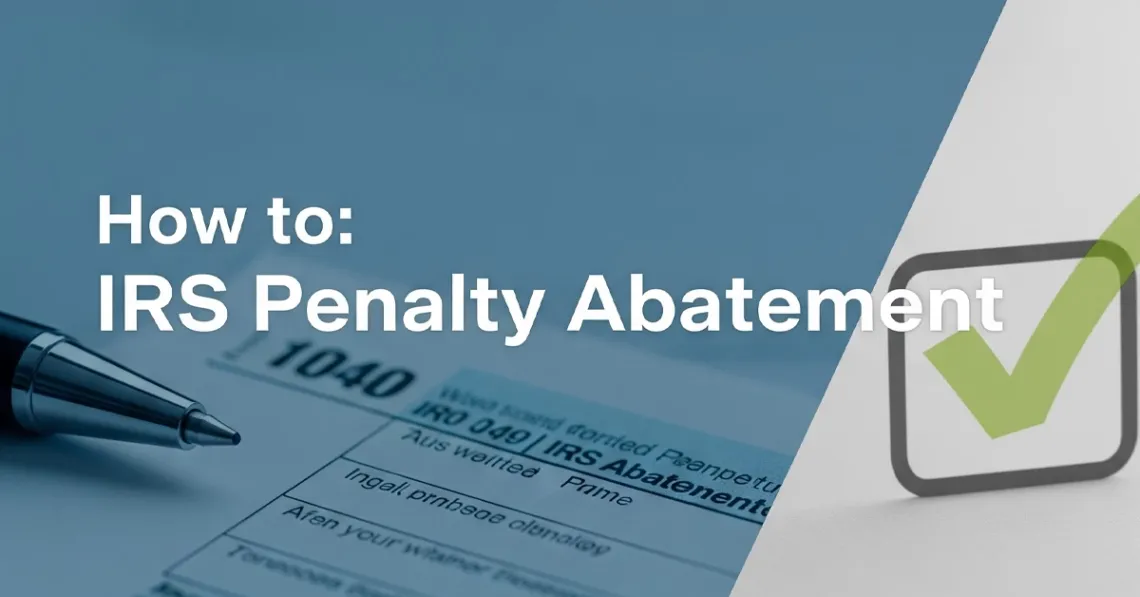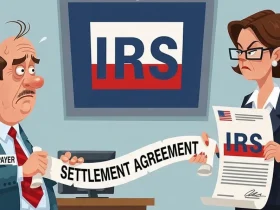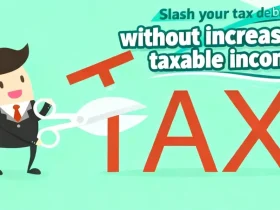
What You Need Before Requesting Penalty Abatement
Before filing a request, make sure you:
- Have filed all required tax returns.
- Are current on estimated tax payments or withholding.
- Can explain why the penalty should be removed (first-time abatement or reasonable cause).
The IRS generally won’t consider penalty relief requests if you’re still missing filings or have unpaid current-year obligations. For a broader overview of how IRS penalties work, see our guide on IRS Penalty Abatement: How to Remove IRS Penalties.
How to Request First-Time Abatement
The First-Time Penalty Abatement (FTA) program is available if:
- You’ve filed and paid on time for the last three tax years, and
- You haven’t received penalties in the past three years.
How to Request:
- Call the IRS directly and ask for “First-Time Abatement.”
- Or write a letter referencing your clean compliance history.
- In many cases, the IRS can remove the penalty on the spot.
How to Request a Penalty Abatement for Reasonable Cause
If you don’t qualify for FTA, you may still request relief for reasonable cause, circumstances beyond your control such as:
- Serious illness or hospitalization.
- Natural disasters.
- Death or serious illness in the immediate family.
- Other events that made it impossible to file or pay on time.
How to Request:
- Clearly explain your situation and provide documentation (hospital records, insurance claims, police reports, etc.).
- The IRS reviews these requests on a case-by-case basis.
If penalties are part of a larger tax problem, you may also benefit from Tax Relief Services, which cover multiple strategies for resolving IRS debt.
Steps for Submitting Form 843
For more formal requests, use IRS Form 843 (Claim for Refund and Request for Abatement).
- Download Form 843 from the IRS website.
- Fill out your personal information, tax period, and penalty type.
- Check the box for “Abatement” and specify whether you’re claiming first-time or reasonable cause.
- Attach supporting documents.
- Mail the form to the address listed in the IRS instructions.
Not sure if you qualify for relief? Start with our guide on When to Seek IRS Help to determine the best first step.
When Professional Help Is Worth Considering
While many taxpayers successfully request penalty abatement on their own, professional assistance may help if:
- You’ve been denied relief before.
- You’re unsure how to document reasonable cause.
- You’re facing multiple penalties along with a large balance.
A tax professional can prepare a stronger case, represent you before the IRS, and coordinate relief with other programs such as installment agreements or offers in compromise.
For example, see our blog on Calculating Your Reasonable Collection Potential for an Offer in Compromise to understand how the IRS evaluates settlement offers.
If you found this guide on how to request an IRS penalty abatement useful, you may also want to review our previous blog on understanding tax relief steps.
That post breaks down how taxpayers can take proactive measures before penalties even become an issue, offering strategies that align closely with the abatement process. Reading both together gives you a fuller picture of how relief options connect and build upon each other.




